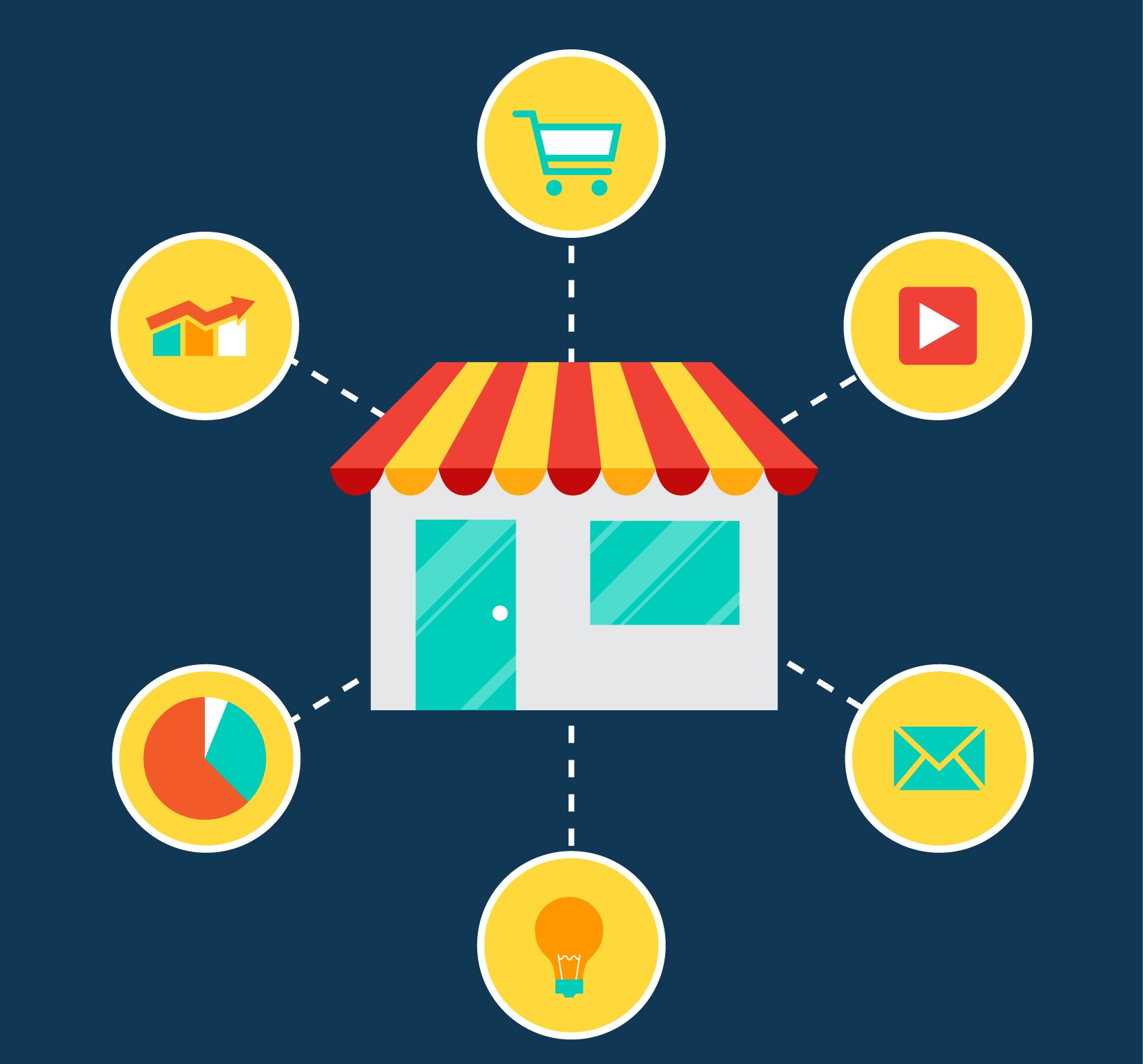As digital commerce evolves, marketplace platforms have become essential hubs for buyers and sellers across various industries. Unlike traditional e-commerce websites, a marketplace platform connects multiple vendors and facilitates transactions between them and customers, creating a dynamic shopping experience. However, building a successful marketplace that drives sales requires strategic planning and an in-depth understanding of user needs. This guide provides a comprehensive step-by-step approach to build a marketplace platform that not only attracts users but also encourages them to return, purchase, and trust your platform.
Step 1: Define Your Marketplace Niche and Audience
The first step in building a marketplace platform is to identify a niche market that has unmet needs or potential growth opportunities. Analyze current marketplace trends to find areas with demand but limited competition, or consider a unique selling proposition (USP) to distinguish your platform from others. Understanding your target audience’s demographics, preferences, and purchasing behaviors will enable you to build a marketplace platform that aligns with their specific requirements. Defining a niche also allows you to tailor your marketing efforts, helping you attract a loyal, engaged user base from the start.
Key Questions to Consider:
- What products or services will your marketplace offer?
- Who is your primary audience, and what are their needs?
- How can your marketplace provide a better experience than competitors?
Step 2: Choose a Marketplace Business Model
Choosing the right business model is critical to the platform’s profitability. The main models include B2C (Business-to-Consumer), B2B (Business-to-Business), C2C (Consumer-to-Consumer), and P2P (Peer-to-Peer). Select the model that aligns with your marketplace goals and target audience, as it will shape everything from user interface design to vendor onboarding and pricing structures.
Popular Monetization Models Include:
- Commission-Based: Charge a percentage of each transaction.
- Subscription Fees: Charge vendors a recurring fee for platform access.
- Listing Fees: Charge a fee for each listing, which works well for platforms with a large volume of listings.
- Freemium Model: Offer a free tier with basic features and charge for premium options, like advanced search filters or promotional placements.
Step 3: Design the Platform’s Core Features
To build a marketplace platform that sells, it’s essential to provide user-centric features that simplify buying and selling. Here are a few critical features:
- User Profiles: Separate profiles for buyers and sellers, with customization options based on user roles.
- Search and Filtering Options: Advanced filters help users easily find specific products or services.
- Payment Gateway Integration: Secure and diverse payment options to encourage trust and seamless transactions.
- Reviews and Ratings: This feature boosts credibility by letting users rate products, vendors, and their experiences.
- Messaging System: Enable secure communication between buyers and sellers to build trust and facilitate transaction details.
- Order Tracking: This allows users to track their orders in real time, which improves the customer experience.
- Admin Dashboard: Include an admin dashboard for managing listings, vendors, transactions, and user queries.
By focusing on a feature set that addresses the needs of both buyers and sellers, your marketplace will be positioned to provide a valuable and efficient user experience.
Step 4: Select the Right Technology Stack
The technology stack you choose will influence the platform’s scalability, performance, and security. Consider popular marketplace development stacks like:
- Frontend: React.js, Vue.js, or Angular for a responsive and interactive user interface.
- Backend: Node.js, Django, or Ruby on Rails for robust server-side functionality.
- Database: PostgreSQL, MySQL, or MongoDB for efficient data management.
- Payment Processors: Stripe, PayPal, or Square for secure and reliable payment transactions.
For those who lack in-house development resources, partnering with an experienced marketplace app development solutions provider can help you build a high-quality platform faster, using the latest tools and best practices.
Step 5: Build an MVP (Minimum Viable Product)
Launching with a fully-featured marketplace platform can be costly and time-consuming. Instead, focus on developing an MVP, which includes only the core functionalities necessary to attract early users and gather feedback.
An MVP allows you to test user engagement, gain insights into customer preferences, and identify any platform limitations before investing in additional features. This agile approach also allows you to launch quickly, iterate based on real feedback, and prioritize improvements that will have the most significant impact on sales.
Step 6: Implement User-Friendly Design and UI/UX
A seamless user experience is crucial for marketplaces, as users are more likely to stay on platforms that are intuitive and visually appealing. Invest in a clean, responsive design that adapts to different devices. Simple navigation, clear calls-to-action, and accessible information are all vital to creating an enjoyable user journey. The visual design should align with your brand’s identity and inspire trust.
Consider conducting usability testing to identify and resolve any pain points in the customer journey. A well-designed UI/UX can have a profound impact on conversion rates and customer satisfaction.
Step 7: Develop a Strong Vendor Onboarding Process
A marketplace platform’s success hinges on the quality and diversity of vendors. To attract reputable sellers, create an efficient onboarding process that’s both thorough and straightforward. Provide clear guidelines, tutorials, and a user-friendly interface for listing products or services.
Tips for Successful Vendor Onboarding:
- Set clear standards for listing quality, including photos, descriptions, and pricing.
- Offer an onboarding guide to help vendors understand platform features and policies.
- Provide support and guidance for sellers on optimizing listings and increasing visibility.
A smooth onboarding process will not only attract more vendors but will also ensure consistent quality across your marketplace.
Step 8: Implement Security and Compliance Measures
Security is a top priority when you build a marketplace platform, as it handles sensitive user data and financial transactions. Implement secure payment gateways and ensure compliance with relevant regulations like GDPR for data protection. Use encryption, two-factor authentication, and secure storage to protect user data.
Compliance with industry standards is also essential to maintain trust with users and avoid potential legal issues. Invest in secure hosting, regular security audits, and transparent privacy policies to establish credibility.
Step 9: Establish a Marketing and Customer Acquisition Strategy
Launching a marketplace platform without a strong marketing strategy can limit your reach and growth potential. Utilize digital marketing channels such as social media, content marketing, SEO, and email marketing to drive traffic and attract both buyers and sellers to your platform.
Marketing Tactics to Consider:
- Social Media Campaigns: Use platforms like Instagram, LinkedIn, or Facebook to promote vendor stories and new listings.
- Content Marketing: Write blog posts, case studies, and how-to guides that showcase the marketplace’s benefits and value.
- SEO Optimization: Implement SEO best practices to ensure your marketplace ranks well on search engines.
- Referral Programs: Encourage users to refer others to the marketplace, rewarding them for their engagement.
Building brand awareness and visibility can take time, so plan for consistent and long-term marketing efforts that help grow your user base over time.
Step 10: Gather Feedback and Continuously Improve
Building a successful marketplace platform doesn’t end at launch. Regularly collect user feedback through surveys, reviews, and usage data to identify areas for improvement. Pay close attention to features or functions that users frequently request, as they can provide insights into customer needs and expectations.
Adopting a continuous improvement approach will help you keep the platform relevant, enhance user experience, and improve functionality over time. Additionally, monitor market trends and competitor activities to stay competitive and update your platform as industry needs evolve.
Conclusion
Building a marketplace platform that sells requires careful planning, the right technology, and a user-centered approach. From selecting a niche and defining core features to implementing security measures and crafting a marketing strategy, each step is essential to developing a successful marketplace. By focusing on these critical steps and maintaining flexibility to adapt to user feedback, you’ll be well on your way to creating a marketplace platform that not only attracts users but also keeps them coming back. With the right foundation in place, your platform can serve as a valuable connection point between vendors and buyers, fostering trust, engagement, and ongoing growth.









